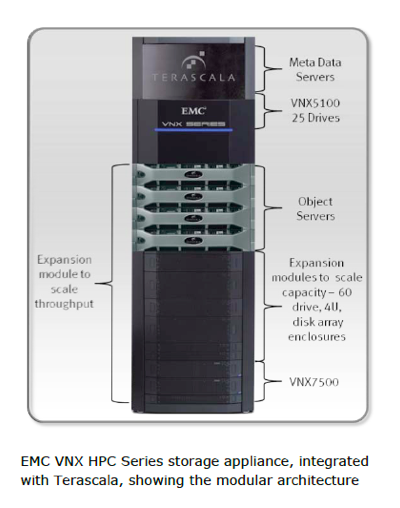Abstract:
With the delay and loss of single-vendor advocated central processor units, operating systems centered on that silicon are considered not necessary. Application vendors dependent upon a single operating system dependent upon a single underlying architecture are even at higher risk. This article discusses the top 3 UNIX vendors with the impact of their silicon trajectory.
 [Rumored IBM Power 7+ Multi-Chip-Modules, courtesy softpedia]
IBM POWER 7+ Now 7 Months Late: AIX in the Crosshairs
[Rumored IBM Power 7+ Multi-Chip-Modules, courtesy softpedia]
IBM POWER 7+ Now 7 Months Late: AIX in the Crosshairs
It was reported last month that
IBM POWER 7+ was delayed about 6 months. As of this date, POWER 7+ is now 7 months late. A little
insight from the IT Jungle from end of January:
This year, IBM is also supposed to add support for Power7+ machinery to the
SDMC, which presumably implies that Power7+ processors are coming out sometime
this year.
Maybe 7 months for IBM POWER 7+ is enough?
Will IBM POWER 8 be mentioned 8 months after POWER 7+ was late?
Of course, the dominant operating system on single-supplier IBM POWER is IBM AIX. The delay single-supplier of POWER impacts single-supplier IBM AIX. Linux may also run under POWER, but Linux is not the reason POWER exists.
Applications locked-into IBM AIX on IBM POWER must wait. Applications compiled for IBM POWER under Linux must also wait. If an business application needs more power, one must wait on POWER.
 [Intel Itanium, courtesy xbitlabs]
Intel Itanium End: End of HP-UX
[Intel Itanium, courtesy xbitlabs]
Intel Itanium End: End of HP-UX
The
Web Logic Development Journal listed some HP statements during the Oracle-HP court case:
- HP did not want to reveal that the Itanium road map is "more an illusion
than of technical significance."
- Its purpose was to "extend the Itanium roadmap... to create market
perception of long term viability."
- "HP-UX is on a death march due to inevitable Itanium trajectory."
- That HP knew that customers are prone to abandon a server technology as soon
as its end of life becomes "visible"
- HP's internal documents show that "the Itanium situation is one of our most
closely guarded secrets."
- "The regions are unaware of the situation with Itanium and the impending end
of life."
- The last Itanium chip, Kittson plus, is released in a throttled down version
and then a full version to create "illusion" of longer roadmap.
The end-of-life for (single supplier) Intel Itanium is not a surprise, but the court statements are interesting.
In November of 2011,
3000newswire discussed Project Odyssey, HP's delivering HP-UX features to only Linux and Windows.
"Unfortunately project Odyssey will ultimately drive most companies to IBM's
AIX. [HP-UX] features on Linux are desirable, but Odyssey won't get many
customers to migrate to Linux. I think it is very interesting that only Linux
and Windows are supported.
Clearly, HP-UX is on the ropes. The [court document revealed] death of Intel Itanium co-insides with HP pushing users off HP-UX and Itanium. With
Oracle shutting down Itanium software development, the
death of Windows on Itanium,
death of Red Hat Linux on Itanium - the push off of Itanium's sole remaining HP-UX operating system is not unusual.
 [Oracle SPARC T4 Processor]
Multi-Vendor SPARC: Solaris Diversity Thrives
[Oracle SPARC T4 Processor]
Multi-Vendor SPARC: Solaris Diversity Thrives
Customer dependent upon IBM POWER or Intel Itanium are locked into those vendors and their single source operating systems (i.e. IBM AIX and HP-UX) as discussed earlier. The death-march by customers dependent upon those operating systems is uneasy. As single vendor CPU suppliers silently delay, operating system vendors tie their customer's fortunes to those single suppliers. Operating systems tied to single CPU vendors are even more at risk.
In the
SPARC community, things is vastly different. SPARC is a specification, multiple commercial vendors build SPARC processors and systems, anyone can choose to make their own SPARC chips without going to existing vendors, there is no legal risk for additional vendors to building SPARC processors, and multiple operating systems by multiple profitable vendors exist for processor support.
Commercial SPARC vendors include:
Oracle, Fujitsu. Fujitsu has the most diverse lines, including:
Throughput, Mainframe, and
SuperComputer SPARC models. Commercial operating system support for SPARC includes: Solaris, Linux. Solaris CPU support include: Fujitsu SPARC, Oracle SPARC, Intel x64, AMD x64. Solaris family OS vendors include: Fujitsu, Oracle,
Joyent,
Nexenta. Solaris based Open-Source distributions include:
SmartOS,
OpenIndiana,
Illumian. Solaris source code trees include: Closed Source
Oracle Solaris, Open Source snapshots of
OpenSolaris; active Open Source
Illumos.
Oracle released a 4 part virtual seminar on the Solaris 11 road map (note:
published comments on Session 1.) With new processors from Fujitsu and Oracle being released (seemingly yearly) and diversification of Solaris under all major commodity processors - it feels like the 1990's, with the launch of the Internet, all over again!



















